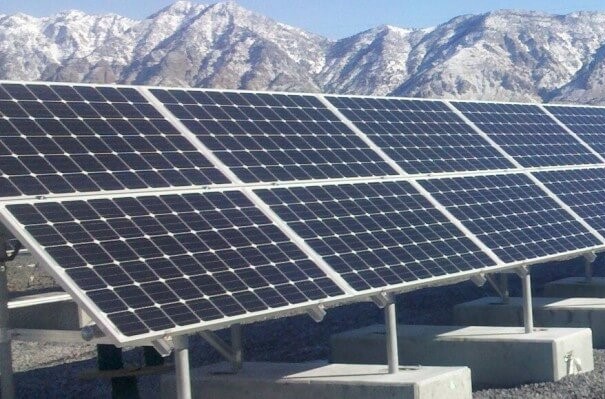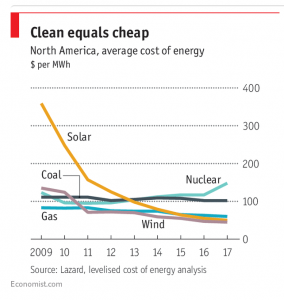Blog Post
Insight: New Energies Fueled by Technology
By: Thomas Holst
Salt Lake City was recently named as a “Solar Star” based on the number of megawatts of solar energy used per capita compared to 70 other U.S. cities. This honor signals a willingness amongst Salt Lake City homeowners to make a front-end investment, often in the tens of thousands of dollars, in order to gain both a better environment and achieve homeowner energy independence.
One distinct feature of the renewable energy movement is the rapid development of technology to make the cost of harvesting solar energy competitive with other energy sources. Francis O’Sullivan of MIT Energy Initiative has stated, “We are moving from a world where the value of energy is embedded in the resource to where technology is the resource.”
As an example, photovoltaic solar panels and wind turbines have become both more efficient and less expensive over the last decade, to the point where both wind and solar are now as cost effective as other forms of energy (see Graph).1
A difficult challenge for renewable energy is to mesh the electricity supply from renewables with electricity demand. To balance supply and demand, the development of lithium-ion battery storage is critical. The problems of this supply-demand imbalance of renewable energy in California are well documented:
Supply: On the supply side, at peak periods of electricity generation by renewables, overloading the electrical transmission system with too much electricity can cause brownouts, just as too little electricity can. During these periods, California has directed its surplus electricity to Arizona when Arizona can curtail its own electricity production. However, when Arizona can’t absorb the excess electricity without incurring costs, California pays Arizona to take its surplus electricity (i.e. negative pricing). This is only for short periods and typically when California’s solar production peaks at midday.
Demand: On the demand side, California municipalities still have electricity demand at night when the sun isn’t shining. To date, several California cities have used coal-fired electricity from sources such as the Intermountain Power Project (IPP) in Delta, Utah, to cover this nighttime demand. However, some California legislators have sought greater reliance on renewable energies, on the assumption that battery storage technology will develop quickly.
The good news for them is that the price of battery storage has tumbled by 79 percent since 2010, from $1,000/kWh to $209/kWh.2
Late last year, Tesla’s Elon Musk promised on Twitter to deliver a battery system to South Australia’s troubled electrical grid, which had been plagued by frequent outages, in 100 days or it would be free. Mr. Musk successfully delivered on the promise in about two months, installing a lithium battery that when fully charged, is expected to hold enough power for about 8,000 homes for 24 hours at a time.
The Tesla battery storage unit shows that battery storage technology may be at a point where it can mitigate renewable energy’s most persistent problem – how to use it when the sun isn’t shining or the wind isn’t blowing.
Thomas Holst is a senior energy analyst at the Gardner Policy Institute.
Footnotes:
- Lazard, The Economist, “Word of Warming”, 17 March 2018.
- Mike Scott, Forbes, (Power Shift) 3 April 2018







